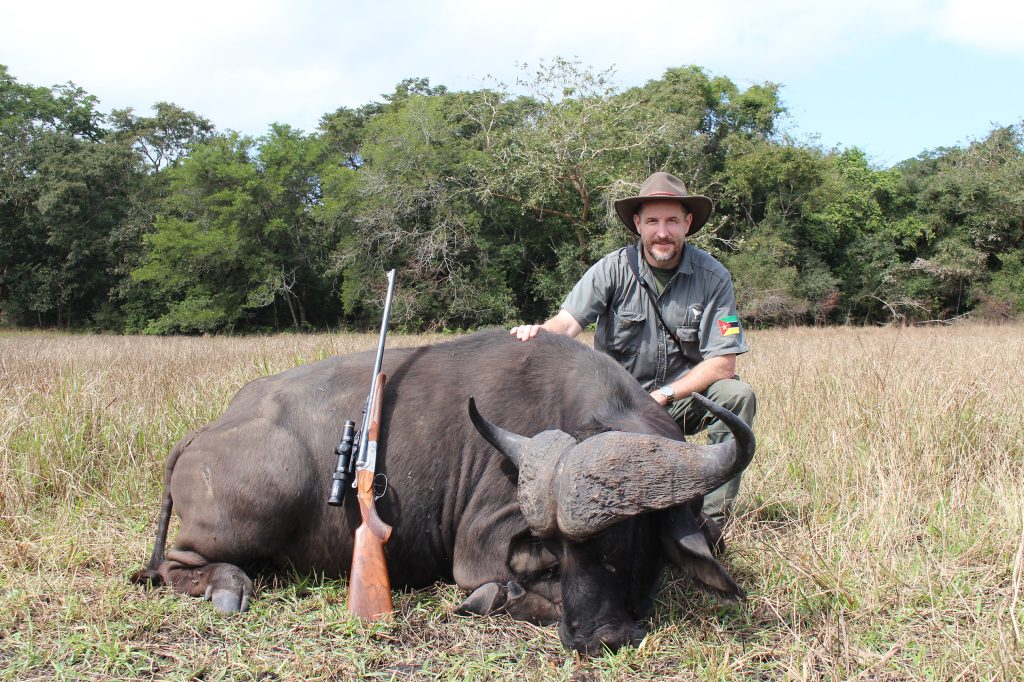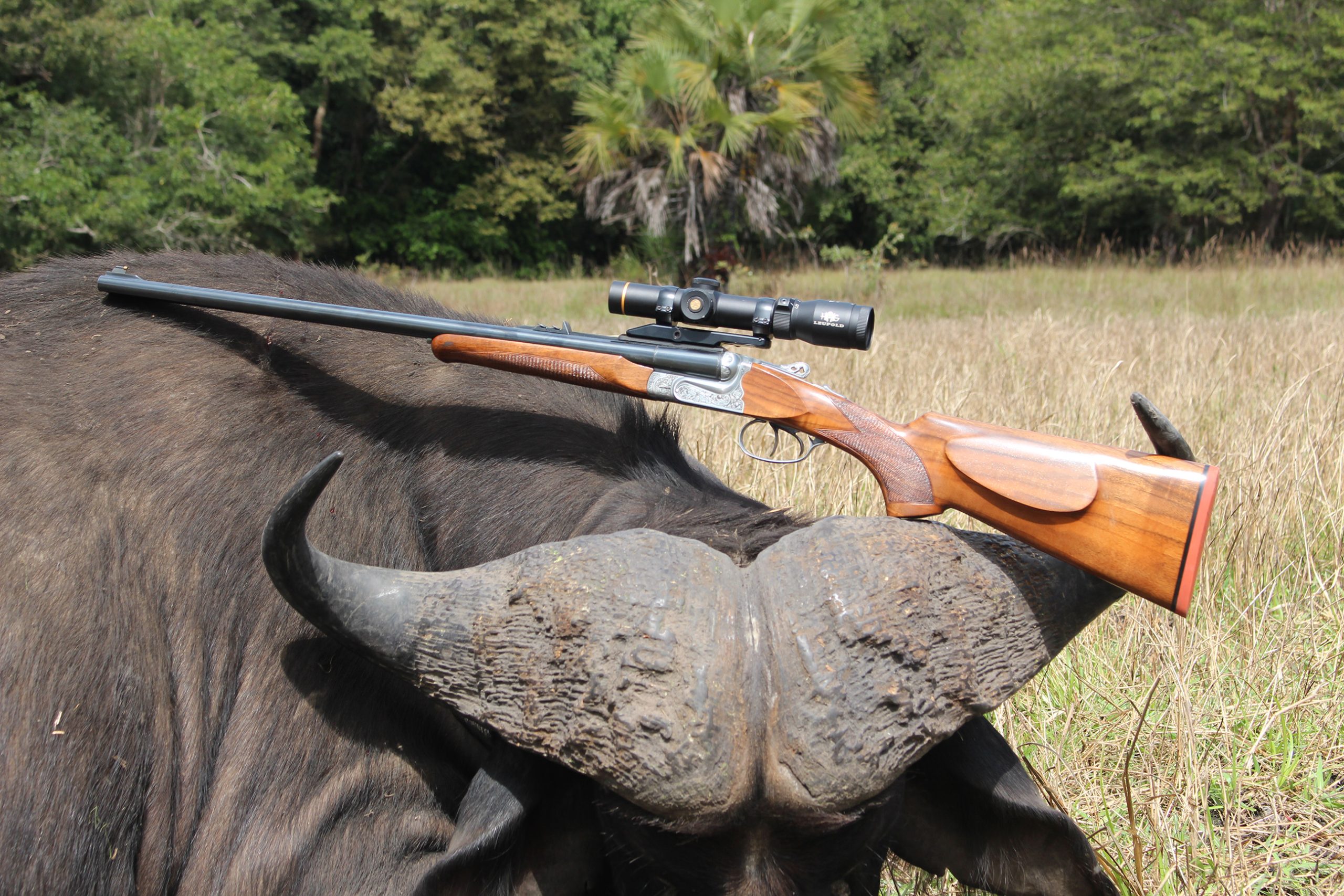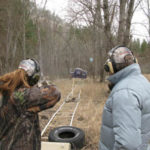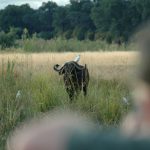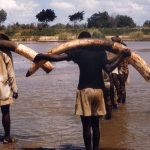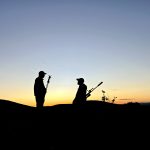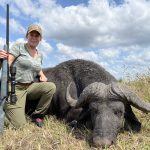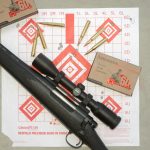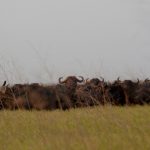What’s best for buffalo hunting: open sights, red dots, or scopes?
Photo above: Though not wide, John Stucker’s 2021 Mozambique bull carried exceptional bosses. Doubles are rarely scoped, but many, especially new doubles, can be. Boddington considered Stucker’s Sabatti .450/.400 3″ with 1-4X scope such an ideal setup that he borrowed it for his buffalo a couple days later.
The buffalo bull was feeding greedily along a little watercourse. We were on a cutbank above him, looking down, not thirty yards. Perfect. Except: He was in eight-foot grass.
Earlier that day, Teresa and Woody Wilhite, hunting with Poen van Zyl, had seen an old buffalo bull at a waterhole. They already had their buffalo, so they told us about him at lunch. He was long gone by the time we got there, but tracks led toward a big patch of tall grass.
September ’21 in Mozambique; hunting with PH Rye Pletts. While we were figuring out the tracks, young tracker Brinko did a very intelligent thing. Unbidden, he climbed a big tree, and immediately signaled he could see the bull.
The buffalo had moved a hundred yards to a small stream cutting through the grass. The strong wind was favorable; we were on top of him in minutes. He was ancient, ribs and hip bones showing; we had the shot, but we couldn’t see the horns. Eventually he raised his head, nice old bull, but before I could get the shot off, he took two steps forward into much longer grass.
Now all I could see were black patches between waving green stripes. More or less broadside, but the head was down and hidden. The backline is where the black patches stop, but where is the shoulder?
It was tough enough through the 4X scope; I’m not I could have visualized it with iron sights. When I felt sure enough, I held down into the grass and fired the right barrel. The bull dropped to the shot and all I could see were four feet up in the air! We rushed down and gave him a finisher, and that was the end of my shortest-ever buffalo hunt.
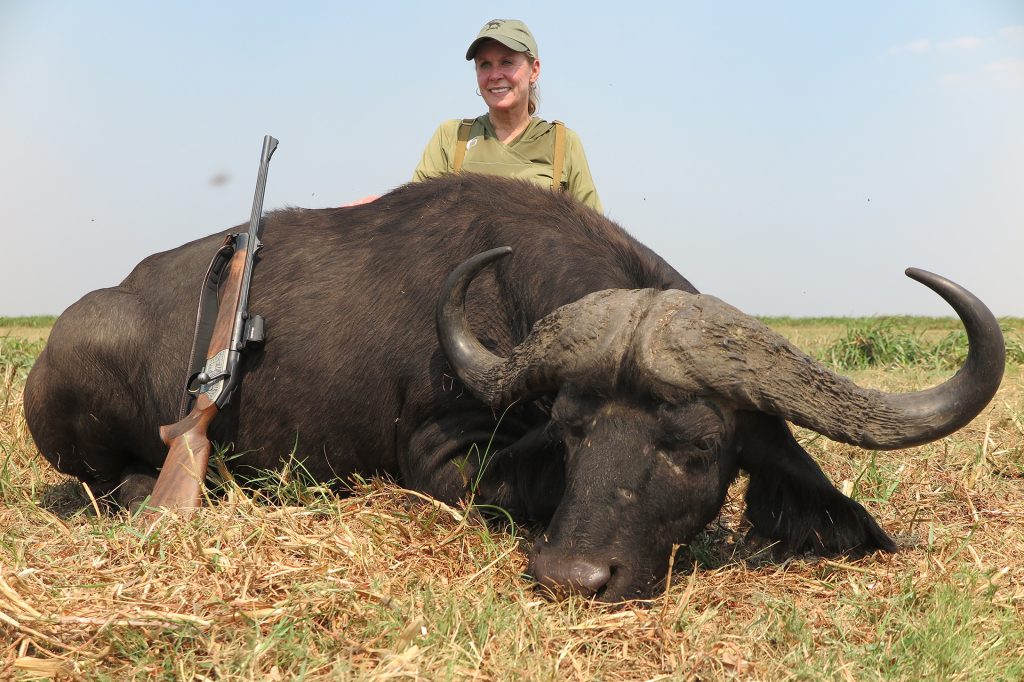
We have this romantic notion that it’s somehow “better” to take the big stuff with iron sights at close range. More traditional, yes. More satisfying, sure…if you pull it off! I remember a fellow in camp pontificating that “the only ‘proper’ way to take dangerous game is with iron sights within thirty yards.” Definitely true with elephant, because thirty yards is a long shot. Absent impaired vision, a magnifying scope is not needed. In fact, it may be counterproductive because of tunnel vision effect, and visualizing an aiming point on a big, gray wall.
I have only taken one rhino and am unlikely to take another. In that limited experience, it took days to locate the correct animal. When we did, we had little trouble closing to twenty yards, and the express sights on a .470 were just fine.
With buffalo, it’s awesome when you can get close and take your bull with a big, iron-sighted rifle. Reality is that you can’t always get close. There is another reality: Only a small percentage of my buffaloes have been solitary. Many were in herds, others in bachelor groups. Here’s the point: In a group, the hard part is often to pick out the one you want. It can be difficult to keep track of that bull as they shift. This can be nearly impossible over iron sights, especially as you approach their effective limit. (Depending on the person and the light, I figure this to be no more than one hundred yards.)
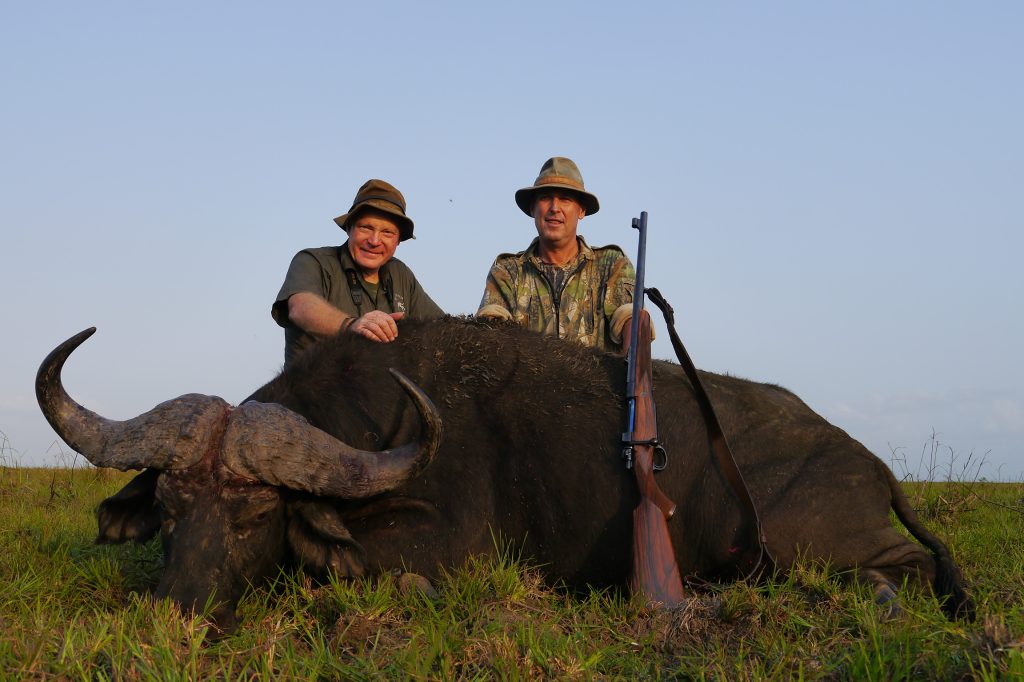
Oh, let me finish the story about our pontificator. After a week of tough hunting, he took an errant shot with his iron sights at the limit. Predictable result: Wounded buffalo. It happens, I’ve done it. The most common outcome is not a charge; more often, a poorly hit buffalo is never seen again. This time, there was a serious charge, stopped by the PH.
Iron sights have been in use for centuries and they work. Most dangerous game PHs carry iron-sighted rifles, for simplicity and ruggedness, for less weight and less brush-snagging protrusion…and because they’re used to them. Also, their purpose is different. They’re not likely to shoot a buffalo at a hundred yards, although most probably could. On most safaris, the PH never shoots, but his rifle is there and ready.
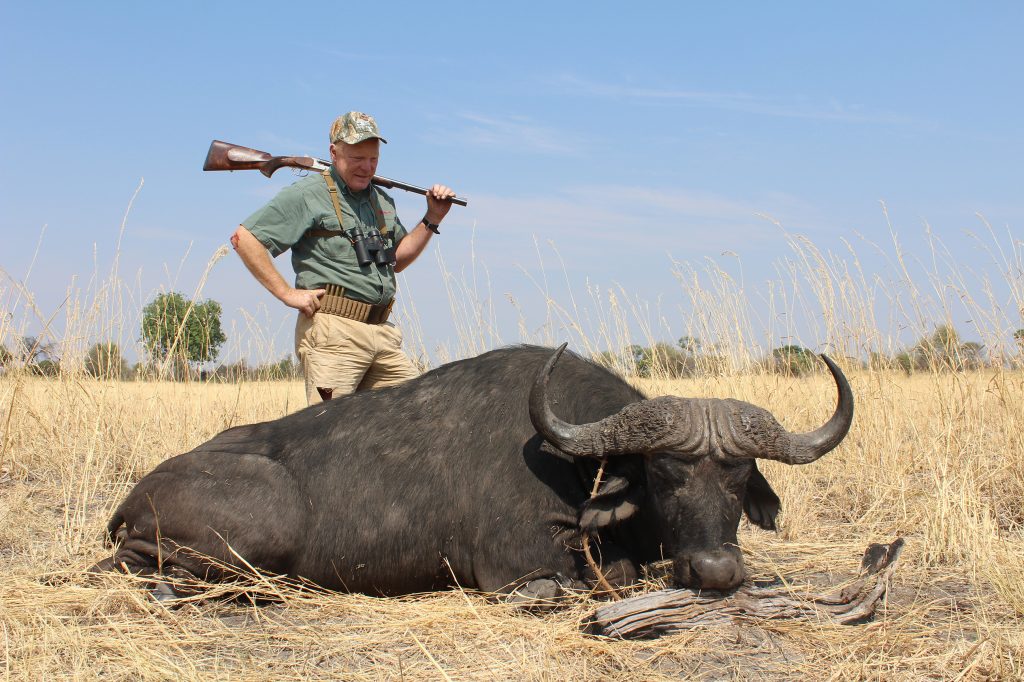
For many of us, a long-dreamed of safari is a reward for a life milestone: Kids out of school, retirement from a first career, finally able to afford it. Most of us have some gray hair before we tackle our first buffalo. Let’s face it: Most of us hunt with scopes. We don’t suddenly awake in our middle years with proficiency with iron sights! Although I was young when I first went to Africa, I was no different! I’d done a lot of shooting with open-sighted .22s and used aperture sights in the Marines, but the first big game animal I hunted with iron sights was a Cape buffalo with a big double! I was surprised at how small that buffalo looked over express sights!
Iron sights work. The more you practice with them and use them, the better they work, and the more confident you become. It takes a lot of shooting and, even under the best of circumstances, effective range is limited. Using iron sights for buffalo, understand you’re giving up a lot of shots!
Long shots are out of the question, but because the buffalo is a herd animal (lots of eyes), and because they’re grazers, they can be caught in open ground with no cover. It’s ridiculous to assume that you can consistently get within fifty yards. Sometimes, but not always. The average shot on buffalo is maybe eighty yards. With practice (and younger or better eyes than mine) this is possible with iron sights. However, if that’s an average, it means that some shots will farther.
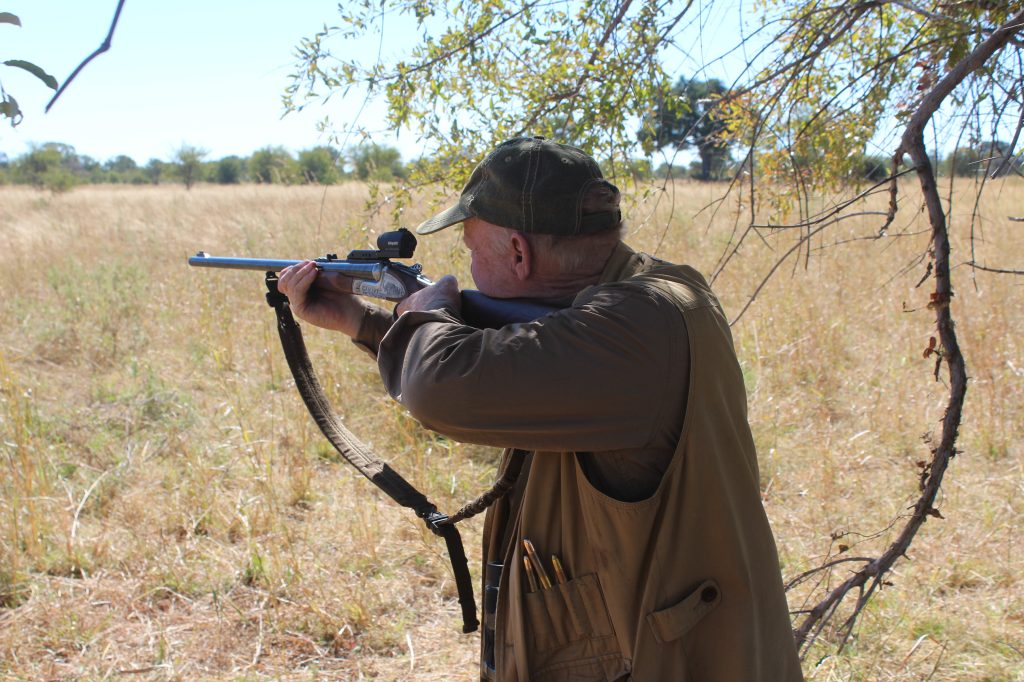
These days I’m having increasing trouble resolving iron sights. I accept that my effective range with open sights is shorter than it once was. I do better with apertures, but still not what I once could do. That doesn’t mean I’ve abandoned iron sights, just that I’m careful where I use them, and I accept the limitation. Early in ’21 I took two buffalo bulls in Uganda, using an old .470 double with typical express sights. One was about forty yards, the other half that. I knew the area, and knew it was probable I could get close enough with that rifle and its sights.
The last fifteen years I’ve done a lot of my buffalo hunting in coastal Mozambique, where we go into big herds, sometimes on open floodplains and short-grass savannas. There, I’ve taken buffalo beyond a hundred and fifty yards. With a scoped rifle, such shooting is practical. With iron sights, risky. That area is not iron sight country!
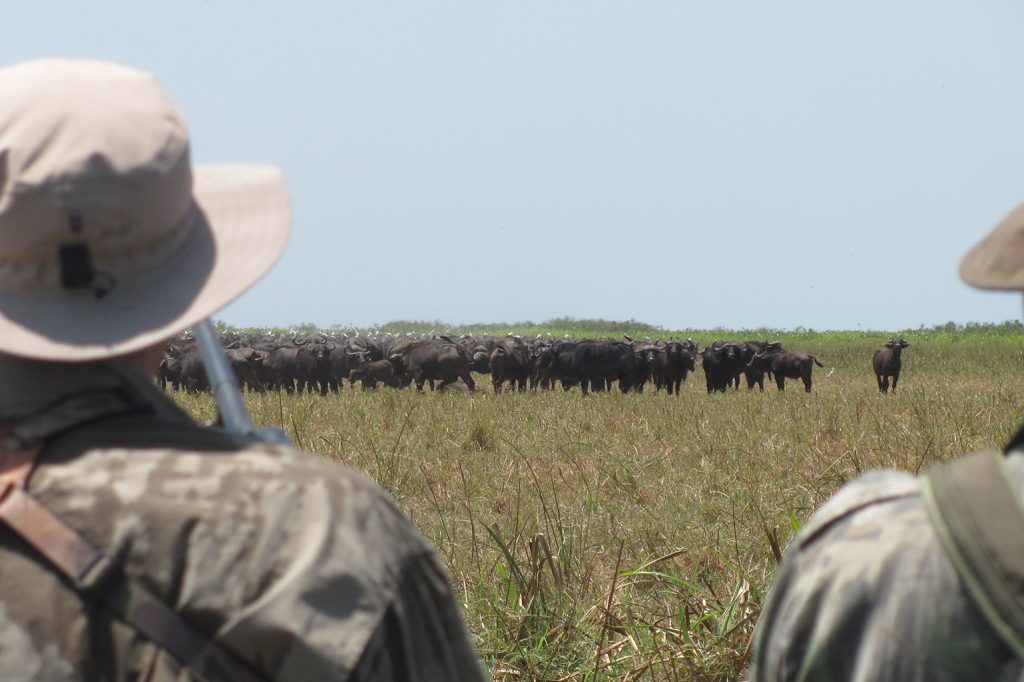
The red-dot or reflex sight is a wonderful alternative to iron sights…especially for guys like me, who are having difficulty resolving the front bead. Several times I’ve put an AimPoint sight on a .375 for buffalo hunting, and I have one on a Sabatti double .450-3 ¼”. I’ve used the AimPoint enough that I’m confident well beyond a hundred yards. At one point I considered it the best option for buffalo, a great compromise between iron sights and a magnifying scope.
Red-dot sights are very good…but not perfect. In Mozambique a couple years ago, I had an AimPoint on my .450 double. Mark Haldane and I got into a big herd about a hundred yards away across a short-grass savanna. I was on sticks, and there was a crackerjack bull in the press. The herd was nervous, constantly shifting. As he jockeyed back and forth, in order to stay focused on that bull, I had to take the rifle off the sticks so I could raise my binocular.
With a magnifying scope, even just 4X, it would have been simple! Eventually the bull stood clear and we got him. I don’t know why I have to keep re-learning old lessons! In the right area I’ll still use iron sights, and for sure I’ll still use the AimPoint. However, if it’s a situation where it’s important to take a buffalo, there’s simply no substitute for a clear, bright magnifying scope.
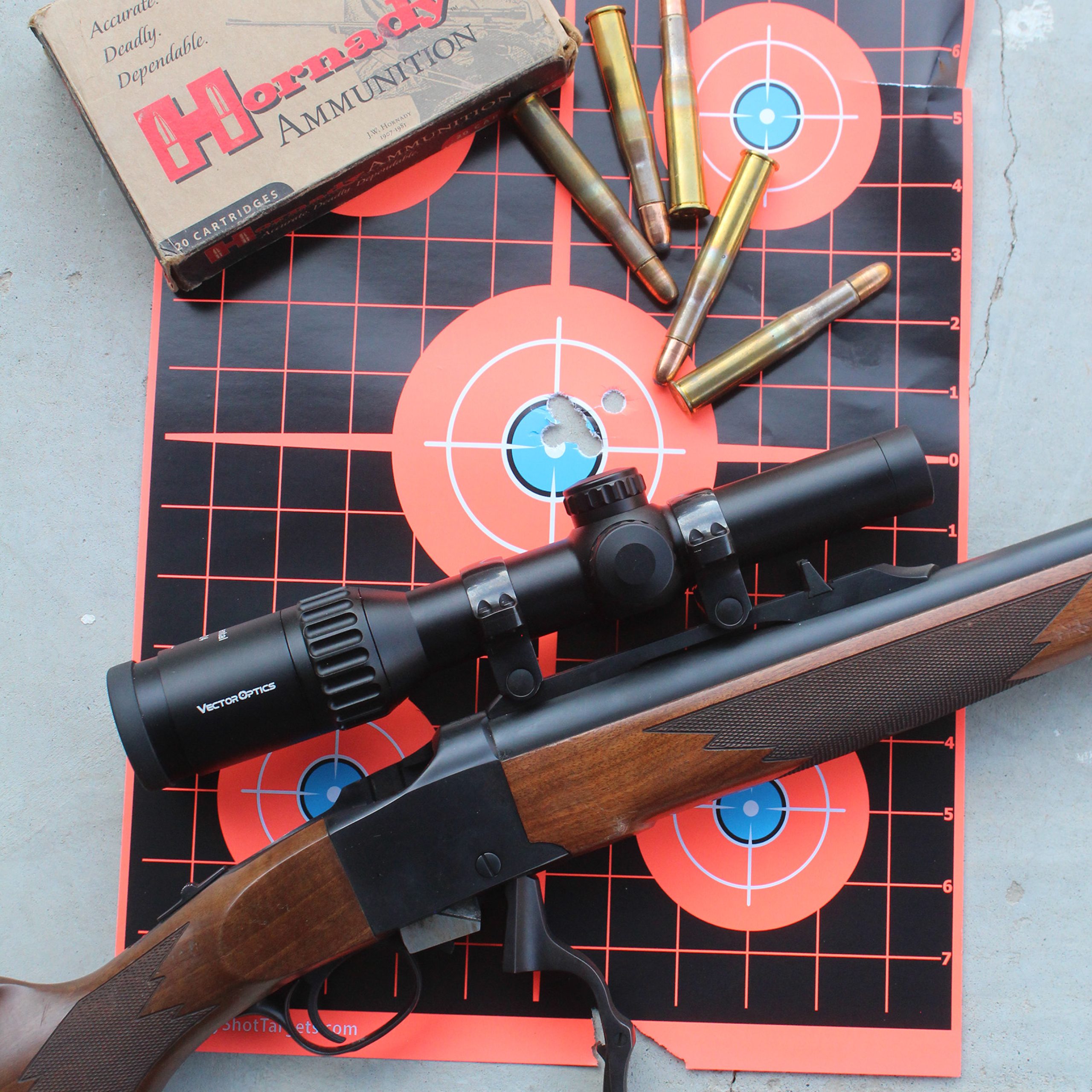
You don’t need much magnification. Right now, I have a Leupold 2-7x33mm on my .375, not specifically for buffalo, but because the versatile .375 benefits from more magnification. For buffalo, the typical 1-4X, 1.75-5X, or 1-6X straight-objective “dangerous game” scope is perfectly adequate. On the buffalo I started this article with, I used buddy John Stucker’s Sabatti .450/.400-3” double with Leupold VXR 1-4X scope. Why his rifle? I had a Blaser .375 with 2-7X in camp, suitable. Stucker had already taken his buffalo, a great bull. I like doubles, and love the .450/.400. When he offered me his rifle with scope, I accepted, figuring I’d be carrying the most perfect buffalo gun imaginable!
